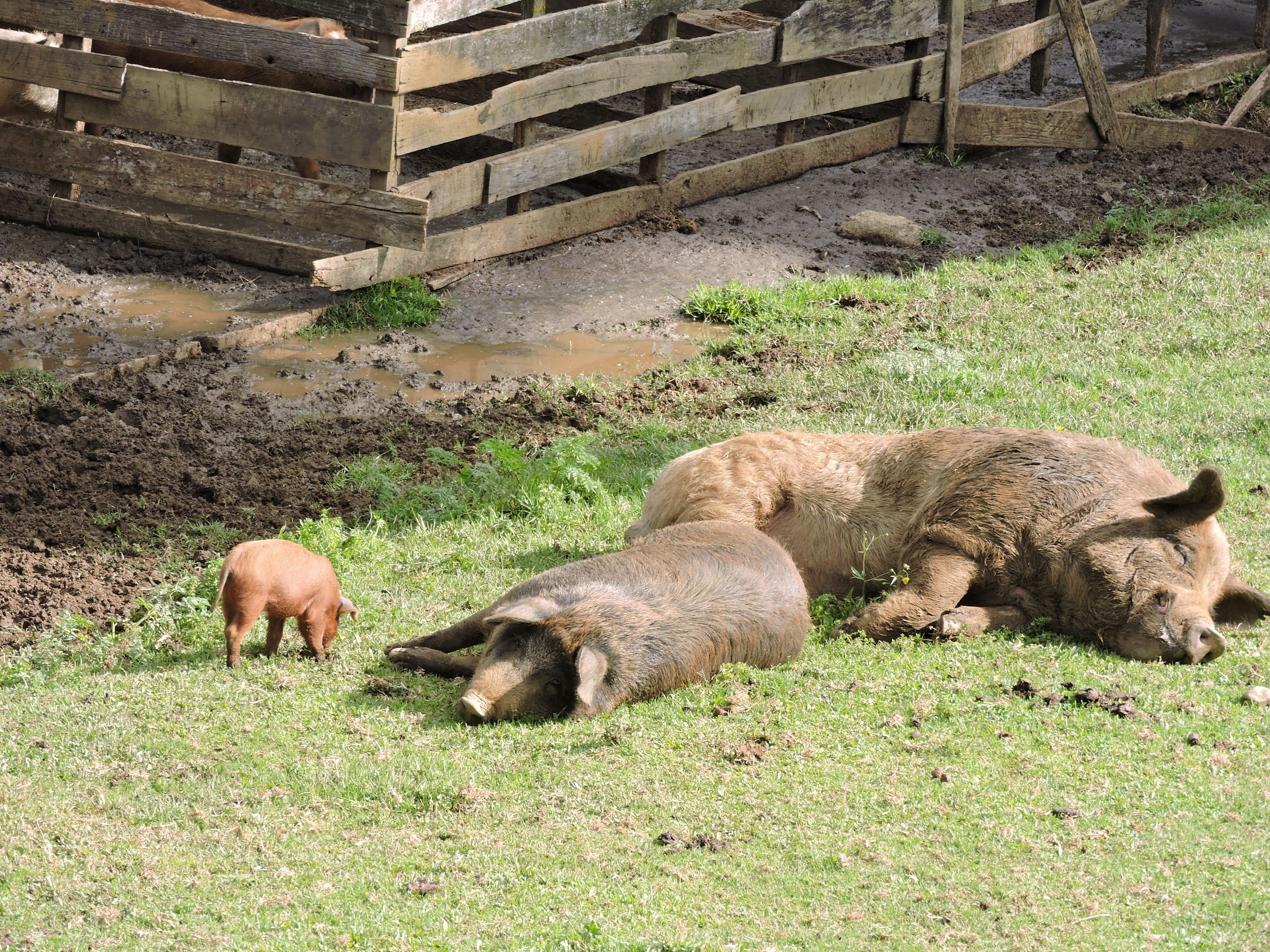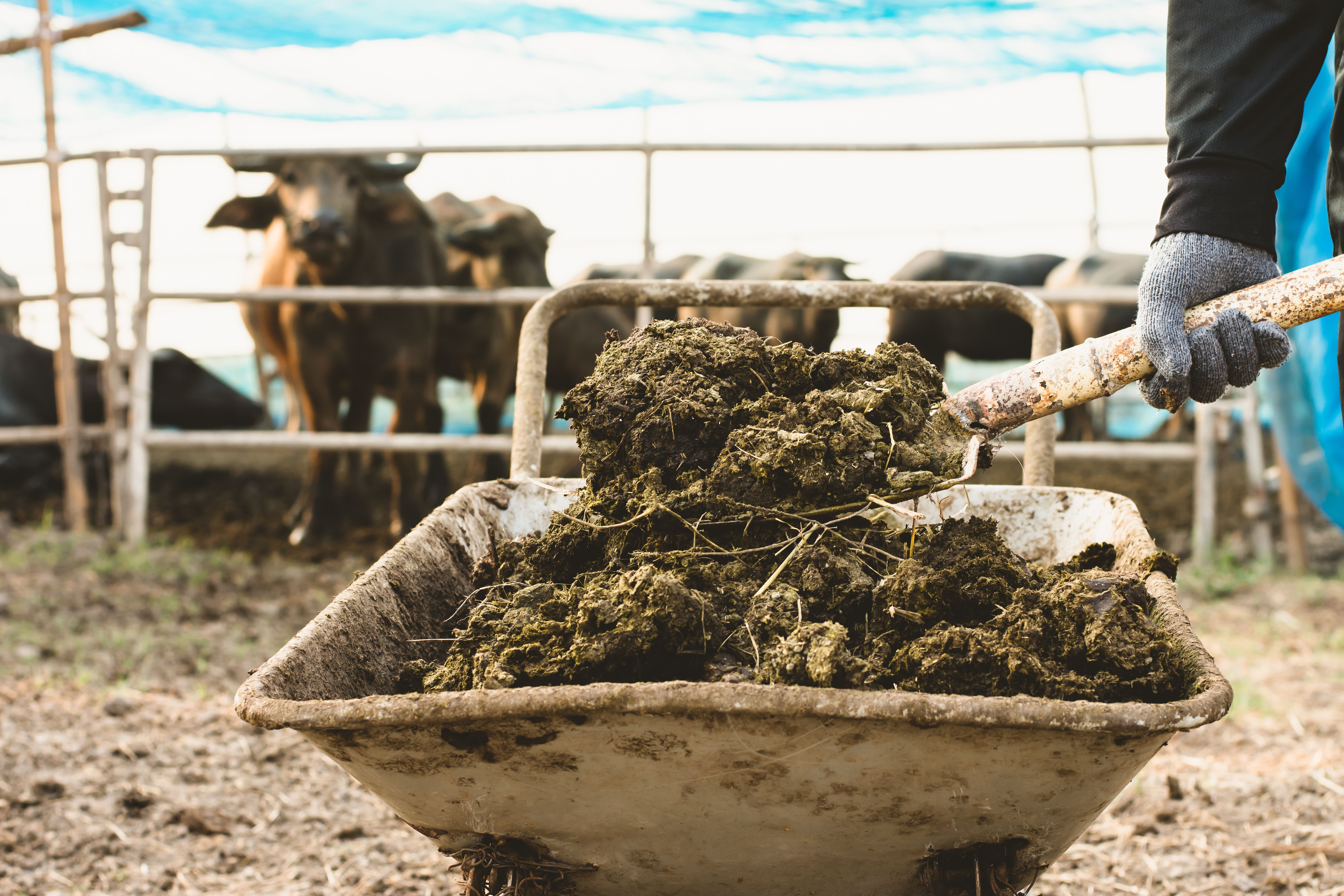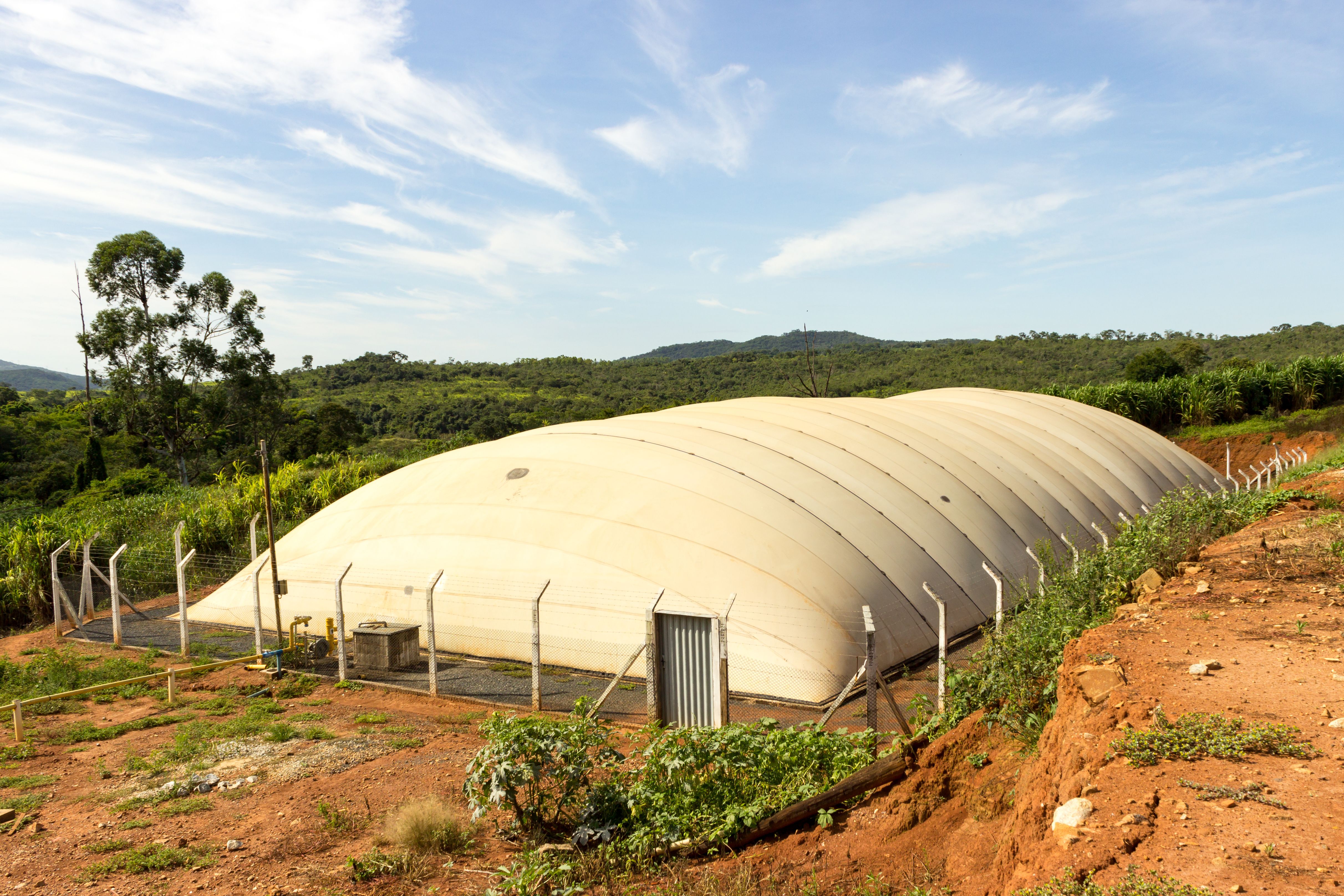What it is
Anaerobic digesters, or biodigesters, are sealed oxygen-free tanks in which microorganisms break down organic waste—food waste, agricultural waste, manure, crops, and wastewater treatment biosolids—into biogas and biofertilizers. They can mitigate as much as 91% of methane emissions from animal manure.

Where can it be used
Anywhere with organic waste, including food waste and paper contaminated with food from residences, commercial operations, and food factories, as well as agricultural waste like manure, and wastewater.
How it works
Anaerobic digestion occurs when organic waste is broken down by bacteria in an environment without oxygen. As the waste is broken down, the bacteria release biogas, which is mostly made of methane and carbon dioxide. Sulfur compounds can be removed from the biogas so that it can be burned for heat or to operate a generator. Biogas can also be upgraded by removing carbon dioxide to produce ~98% methane for use in existing natural gas infrastructure. The other material remaining in the biodigester—called digestate—is rich in nutrients and can be used as a biofertilizer.
Anaerobic digesters are built with a wide variety of configurations and at different scales. The choice of anaerobic digester configuration depends on local factors and the types of waste being processed; large-scale anaerobic digestion facilities can achieve economies of scale, but smaller-scale ones are cheaper and easier to implement. The latter may be more suitable for rural areas or small farms, while large-scale facilities could be adopted by large agricultural operations or municipal governments.

Who’s doing it
Small-scale biodigesters, which are inexpensive and require little maintenance, have been used in rural areas of Latin America and the Caribbean since the 1970s. They typically produce biogas for heating and cooking using animal manure. Today, most digesters in South America are small-scale, but more and more countries have taken an interest in large-scale biodigesters over the last decade, such as Brazil, Argentina, and Chile.
Most biodigesters in South America use animal waste to produce biogas; however, they are increasingly being used for other types of waste as well. For example, a pilot project in Colombia—developed by the Alliance of Biodiversity International and the International Center for Tropical Agriculture (CIAT), and the engineering company GICON with funding from Germany’s International Climate Initiative (IKI)—is experimenting with anaerobic digestion for different types of waste across municipalities in Colombia. The project’s goal is to develop approaches that can be deployed by diverse municipalities in Colombia.
Another example is Chile’s “Reciclo Orgánicos” Programme—a five-year project that includes a focus on anaerobic digestion for waste and wastewater treatment. It is funded by and in collaboration with the Government of Canada.
In Brazil, small-scale anaerobic treatment of agriculture and livestock waste is widespread. Since 2003, anaerobic digestion plants in the agricultural sector have increased exponentially, from six to over 500. Even so, anaerobic treatment has great potential to grow—it is currently in use in less than 1% of rural properties in Brazil. The technology is particularly advantageous for rural areas: using anaerobic digestion enables them to reduce their energy demand from external suppliers and avoid potential disruptions associated with external energy supplies.

Policy considerations
Laws, policies, and regulations
National, regional, and municipal governments can facilitate the adoption of anaerobic digestion through laws and regulations. For example, biogas can be promoted as a renewable source under national energy strategies. Additionally, governments can create policies and initiatives that enable the adoption of biogas to generate electricity. Conversely, the national government can adopt a national strategy or legislation that pushes municipalities to reduce methane emissions from organic waste through anaerobic digestion or another technique.
Financing
Anaerobic digesters projects may be public or private, and funded through a variety of sources. In South America, many projects have been funded by UN agencies and international development programs, including climate mitigation funding. Governments may consider tax incentives, public-private partnerships, bond financing, direct municipal funding, loan guarantees, and grants.
Anaerobic digestion projects can also generate revenue that can fund their long term maintenance and potentially turn a profit by selling RNG from biogas. Governments can operate these plants and sell the RNG themselves. Governments can also adopt policies to facilitate the development of cooperative organizations or cooperative commercial arrangements that connect those involved in the creation of RNG from biogas—waste collectors, composting facility owners, farms generating biogas—with utilities that can use the fuel.